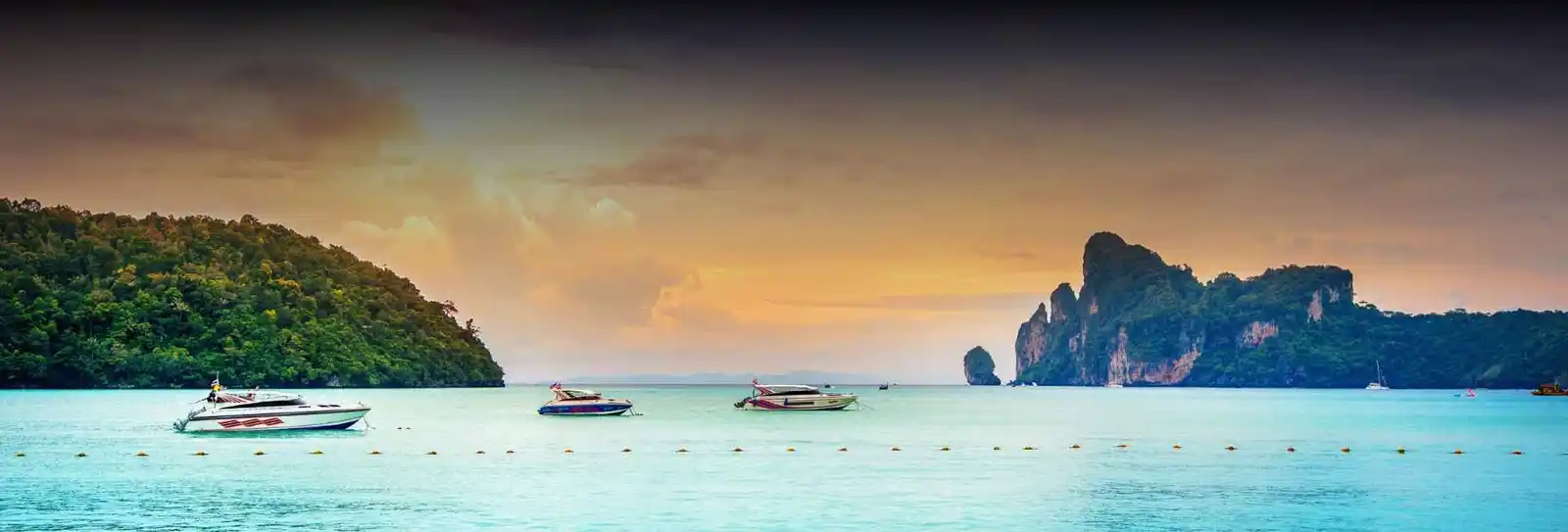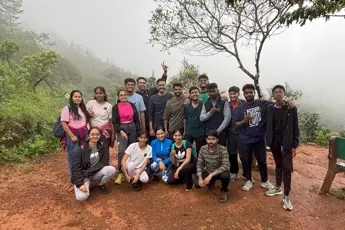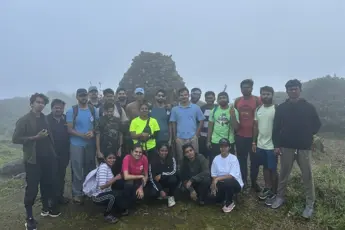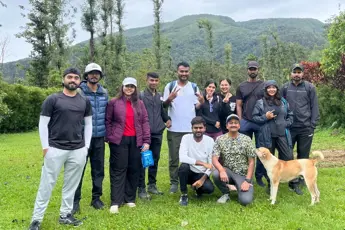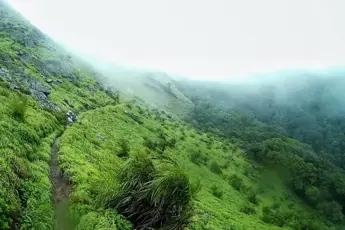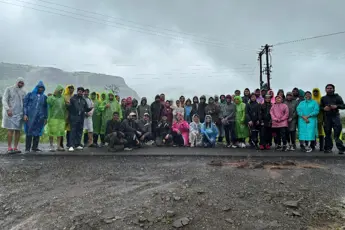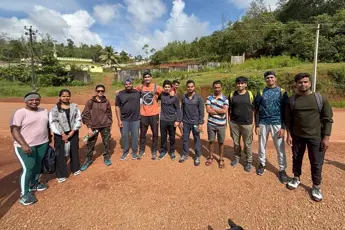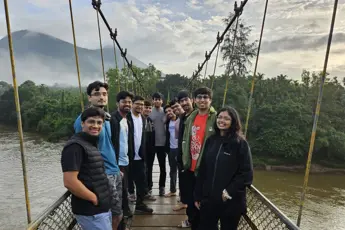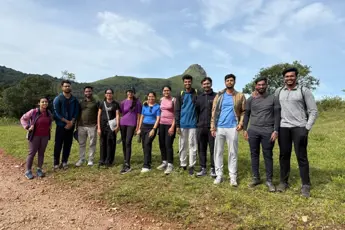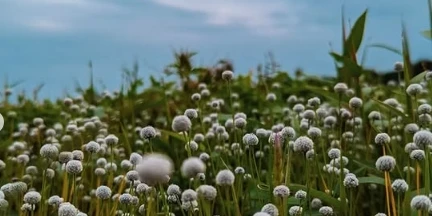
1. Hampta Pass Trek, Himachal PradeshHampta Pass Trek is a highly scenic crossover trekking trail in the Indian Himalayas, in the beautiful state of Himachal Pradesh. The trek goes through the lush green Kullu valleys and the dry, barren landscape of Lahaul, with a sudden change of scenery. At approximately 14,000 feet above sea level, Hampta Pass is ideal for beginners and experienced trekkers since it is moderately challenging and offers great scenery. The route features meadow grassland, the valley of glaciers, river crossing, and snow peaks landscape.History of the Hampta Pass TrekLess written about in history than a few Himalayan passes of the past, Hampta Pass has long been a route walked by shepherds along which local Gaddi shepherds drive their flock seasonally between verdant Kullu Valley and dry Lahaul. Years have witnessed the trek increasingly walked by trekking groups as a more practical option, especially among adventure seekers who are looking for a Himalayan trekking experience of extreme contrasts in landscapes for the least distance.Places to Visit Around the Hampta Pass TrekManali: A popular hill resort and trekking centre, Manali boasts colourful bazaars, hot springs, temples, and a scenic location on the Beas River.Chandratal Lake: This Spiti Valley crescent-shaped lake is a fantasy lake and is usually seen on the trek end. Deep blue skies and steep mountains surround it at an altitude of 14,100 feet.Rohtang Pass: Drive from Chatru, Rohtang Pass is renowned for its snow and beauty. It links Kullu Valley to Lahaul and Spiti.Keylong: Keylong, the Lahaul district headquarters, is renowned for its Buddhist monasteries and peaceful landscape.Best Time to Visit the Hampta Pass TrekJune to July: Snow on the higher slopes, primarily near the pass. Optimum time for snow trekking lovers.August to mid-September: The meadows are full of flowers after monsoons, and treks are tourist-free to some extent with plenty of landscapes and landscapes.How to Reach Hampta Pass TrekBy Airport: The nearest airport is Bhuntar Airport (Kullu-Manali Airport), 50 km from Manali. A taxi or local transport facility can be availed from Bhuntar to Manali, the trek starting point.By Road: Manali is also connected by road to other key cities like Delhi and Chandigarh. Daily bus, taxi, and car facilities are available for this route. From Delhi: 550 km (approx. 12-14 hours)By Train: The nearest major railway station is Joginder Nagar, which is about 160 km from Manali. But Chandigarh Railway Station is within the reach of most of the tourists with easy facilities and frequent Manali buses.2. Valley of Flowers Trek, UttarakhandThe Valley of Flowers Trek is India's most gorgeous and most renowned trek, situated in the Chamoli district of Uttarakhand within the UNESCO World Heritage Valley of Flowers National Park. In the Western Himalayas at approximately 14,000 feet, this trek is renowned for its grassland, meadows, high-altitude flowers, waterfalls, and excellent fauna. It's heaven on earth for all nature lovers, botanists, and photo enthusiasts. The trek does not look as challenging as it is, and it's absolutely simple for both inexperienced trekkers and veteran trekkers to undertake both of them.History of the Valley of Flowers TrekValley of Flowers was first noticed by British climbers Frank S. Smythe and R.L. Holdsworth in 1931 after having successfully concluded an Mt. Kamet expedition, they were struck by the natural splendour. The Valley of Flowers was later declared a national park in 1982 and a site among UNESCO World Heritage Sites in 2005. Valley of Flowers is also linked to Indian mythology when Hanuman discovered the Sanjeevani herb during the Ramayana.Places to Visit Near the Valley of Flowers TrekHemkund Sahib: Holy Sikh pilgrim site, 15,200 feet above sea level, Hemkund Sahib is a glacial lake and Gurudwara. Ghangaria trek is an arduous but spiritually and scenically rich experience.Badrinath: One of the Char Dham pilgrimage sites, Badrinath is 25 km from Govindghat and a must-visit for religious as well as natural wonders.Joshimath: Mountain resort on the way to Govindghat, Joshimath is a trekker and pilgrim hub, renowned for temples, a cable car ride at Auli, and stunning Himalayan vistas.Auli: A year-round favourite skiing resort and vacationing spot, Auli is located approximately 16 km from Joshimath and has awesome views of the Nanda Devi ranges.Best Time to Visit the Valley of Flowers TrekJune to early July: Vegetation in sight and snowmelt.Mid-July to mid-August: Flower season high point – the valley is a rainbow-colored kaleidoscope.Late August to September: Flowers start to wilt, but the scenery is pleasant with no tourist crowd.How to Get Valley of Flowers TrekBy Flight: The Closest airport is Jolly Grant Airport, Dehradun, 295 km from the trek base, Govindghat. Taxi services are available from the airport to cover Govindghat through Rishikesh and Joshimath.By Rail: The closest railway station is Rishikesh, 270 km from Govindghat. Taxi service can be booked or a bus can be boarded from Rishikesh to Joshimath and then to Govindghat.3. Bali Pass Trek, UttarakhandBali Pass Trek is a challenging yet thrilling high-altitude trek in Uttarakhand's Garhwal Himalayas for experienced adventurers looking to trek off-beat trails. Located at about 16,207 feet (4,940 meters) above sea level, the trek connects the Har Ki Dun Valley and the Yamunotri Valley through dense forests, alpine grasslands, glacial valleys, and snow ridges. The trek offers breathtaking views of the giant peaks like Swargarohini, Kala Nag (Black Peak), and Bandarpoonch. The trek offers untamed wilderness, mythological value, and high-altitude adventure.History of Bali Pass TrekBali Pass trek is of humongous mythological and historical significance. Pandavas of the Mahabharata, according to mythology, have made this trek during their final visit to heaven via Swargarohini. It was an ancient path for local shepherds and pilgrims for centuries to connect the area of Yamunotri with the out-of-bounds villages of Har Ki Dun valley. Today it is a prized trek by experienced trekkers who are willing to trek lesser-known paths of Uttarakhand.Places to Visit Around Bali Pass TrekYamunotri Temple: At the end point of the trek, one of the Char Dham temples, the Goddess Yamuna temple. A peaceful and sacred place in the Himalayan mountain ranges.Ruinsara Tal: A stunning glacial high-altitude lake ringed by white peaks in all directions and green grassy meadows. Usually a trekking sensation.Har Ki Dun Valley: A stunning valley famous for alpine beauty and isolation. Bali Pass is usually clubbed by tourists with a Har Ki Dun trek.Sankri Village: Entry point for the majority of the Uttarakhand treks, like Kedarkantha, Har Ki Dun, and Bali Pass. A peaceful village with home stays and mountain scenery.Best Time to Visit Bali Pass TrekMay to June: Transparent weather, white-cap trails, and breathtaking Himalayan peak sights.September to October: Clarity post-monsoon, pleasant weather, and a thinning crowd.How to Reach Bali Pass TrekBy Airport: The nearest airport is Jolly Grant Airport (Dehradun), 210 km away from the trekking beginning point, Sankri. Share cabs and taxis are readily available from the airport.By Rail: The nearest railway station is Dehradun Railway Station. Well connected to Delhi, Haridwar, and Rishikesh.By Road: Trekking base village Sankri is approximately 190–200 km from Dehradun. Jeep, bus, or private taxis available from Dehradun can be booked to reach Sankri.4. Kedarkantha Trek, UttarakhandKedarkantha Trek is India's finest winter trek, located in the Govind Wildlife Sanctuary of Uttarkashi district of Uttarakhand. The maximum height reached is 12,500 feet (3,800 meters), and the trek is renowned for giving the highest view of snow-capped mountains, thick green pine forests, and ancient Himalayan villages. It is also known for offering a 360-degree panorama of the entire landscape at the summit, especially during winter when the mountains are snow-capped. The trek is ideal for newbies and adventure seekers looking to cover a moderately difficult snowy Himalayan trail.History of KedarkanthaKedarkantha, the wrongly named high Kedarnath Temple, is a stand-alone peak of the Garhwal Himalayas. The summit holds religious connotations, indicating Lord Shiva, and previously it was assumed that he was in meditation there. "Kedarkantha" is literally "Lord Shiva's Throat." The trek functioned in winter, recently, on account of visibility, hilly terrain, and the establishment of successful communication at the summit.Places to Visit around SankriSankri Village: A small Himalayan village, a starting point for some of the treks like Kedarkantha, Har Ki Dun, and Bali Pass. Simple guesthouses and very picturesque scenery.Juda Ka Talab: It is a serene, high-altitude lake usually frozen in winter, surrounded by pine forests and camps. It is the second-largest stoppage in the trek.Govind National Park: The park consists of thick forests and fauna like Himalayan black bears, musk deer, and golden eagles. The trekking trail comes under this park.Har Ki Dun Valley: Near Sankri, this peaceful valley is also a trekking hotspot, famous for its alpine meadows and mythological importance.Best Time to Visit KedarkanthaDec to Feb: Time for snow lovers. Snowdrifts and a picturesque white landscape to enjoy.March to April: Melting snow; bloom of forest rhododendron.Summer (May-June) and Autumn (Oct-Nov): Pleasant weather and pleasant view, but no snow.How to Reach KedarkanthaBy Airport: The nearest airport, Jolly Grant Airport (Dehradun), is 210 km from Sankri, a trekking village base.By Rail: The Dehradun station has good connectivity to cities. Private taxis or shared vehicles from there take you to Sankri.By Road: 190–200 km (around 8–10 hours by road) from Dehradun to Sankri. Early morning buses and shared jeeps ply from Dehradun to Sankri via Purola and Mori.5. Bhrigu Lake Trek, Himachal PradeshBhrigu Lake Trek is a magical high-altitude trek in the Kullu district of Himachal Pradesh, close to Manali. At a height of 14,100 feet (4,300 meters), the lake is famous for its colour-changing properties and mythological importance. In contrast to any other high-altitude treks where it can take days to reach alpine meadows, the Bhrigu Lake Trek offers enormous grasslands, rolling meadows, and breathtaking views within a day of the trek. The trek via dense forest cover, apple orchards, and open ridges with wide-angle views of Hanuman Tibba, Deo Tibba, Seven Sisters Peak, and the Pir Panjal range.History of Bhrigu LakeBhrigu Lake is filled with Hindu mythological significance and is said to be the residence of Maharishi Bhrigu, a saintly sage of Indian legends. Locals give respect to the lake and vouch that the lake never freezes entirely, irrespective of the weather. The trek provides not only scenery but spiritual energy too for the adventure enthusiasts.Places to See Around Bhrigu LakeManali: A Tourist town and the beginning of the majority of treks. Take a walk around Mall Road, Hidimba Temple, Solang Valley, and Beas River restaurants.Sola tourist Valley: Paragliding, skiing in winter, and zorbing of the international kind. Cable rides with a beautiful view of the adjacent mountains are also arranged.Vashisht Village: Renowned for the Vashisht temple and hot springs. A peaceful place to unwind before or post your trek.Rohtang Pass: If open during your visit, Rohtang Pass offers nice views and connects Kullu Valley with Lahaul and Spiti.Best Time to Visit Bhrigu LakeMay and June: Snow patches on the trail, cold, and grassy green meadows.July and August: Monsoon covers the earth with green, but the trails are wet.September and October: Clear sky, fewer people, and the lake is at its best.How to Reach Bhrigu LakeBy Airport: The closest airport is Kullu's Bhuntar Airport, 50 km from Manali. A taxi or bus can be booked there to reach Manali and then further to the trekking base.By Rail: The closest broad-gauge railway station is Chandigarh (310 km from Manali). There you will need to drive or take a bus to Manali.By Road: Manali is well connected with Delhi and Chandigarh cities by overnight buses and private taxis. Hike to Gulaba or Kolang, the typical beginning of treks.6. Dayara Bugyal Trek, UttarakhandDayara Bugyal Trek is the most picturesque and beginner trek of the Indian Himalayas, located in the Uttarkashi district of Uttarakhand. "Bugal" is the name for meadow, and Dayara is India's highest alpine meadow at an altitude of 11,830 feet (3,610 meters) above sea level. The trek further has a portion of dense pine and oak forest, snowy streams, village life, open rolling grasslands and sweeping views of mountains like Bandarpoonch, Black Peak, and Draupadi Ka Danda. It is also perfect for beginners, families, and nature lovers. Dayara Bugyal has been utilised by local shepherds for centuries to summer graze cattle. Although not a part of any mythological heritage, the zone is culturally and ecologically important for the locals. It has been the trekkers' favourite destination over the past decade or so since it is easy to reach, scenic, and can be trekked year-round.History of Dayara Bugyal TrekDayara Bugyal has traditionally been used by local shepherds for grazing livestock during the summer months. While not associated with any specific mythology, the region holds deep cultural and ecological importance for local communities. In recent years, it has gained popularity among trekkers for its accessibility, beauty, and year-round trekking potential.Places to Visit near Dayara Bugyal TrekUttarkashi: Spiritual and cultural centre on the Bhagirathi River with temples, ashrams, and the Nehru Institute of Mountaineering (NIM).Raithal and Barsu Villages: Trekker hubs of authentic Himalayan villages. Absorb Garhwali culture, architecture, and society.Bakaria Top: Further higher point close to Dayara Bugyal with still more expansive views of the Garhwal Himalayas.Gangotri Temple: A Hindu pilgrim hub and one of the Char Dham. If time allows, Gangotri (around 2–3 hours from Raithal) is worth a visit.Best Time to Visit Dayara Bugyal TrekWinter (December to February): Snow meadows and breathtaking Himalayas views make a pure winter wonderland.Spring (March to April): Melting of snow, rhododendron blooms, and new green.Summer (May to June): Pleasant weather with open meadows and blue skies.Autumn (September to November): Fresh air, golden forests, and crystal clear mountain views.How to Reach Dayara Bugyal TrekBy Airport: Jolly Grant Airport (Dehradun), about 185 km from Raithal or Barsu (base villages of the trek). The nearest major railway station is Dehradun Railway Station. Shared taxis and buses ply from there to Uttarkashi, and onwards to the base village.By Road: Dehradun to Raithal/Barsu (base villages): Average Distance: ~180–190 km. Approximate Travel Time: 7–9 hours by road. Dehradun → Uttarkashi → Raithal/Barsu7. Goechala Trek, SikkimOne of India's toughest trekking trails, the Goechala Trek, is situated in the state. Situated within Khangchendzonga National Park, the trek provides breathtaking vistas of Mount Kanchenjunga (8,586 m), the third-highest peak on our planet. The trek reaches an altitude of 16,207 feet (4,940 meters) at Goecha La Viewpoint and is tough but very rewarding. The trekkers pass through rhododendron forest cover, alpine pastures, serene glacial lakes, and sweeping ridgelines.History of Goechala TrekGoechala is full of treasures for trekkers and locals alike. It is a sacred portal to the eastern face of Mount Kanchenjunga and occupies a sacred position in Sikkimese and Tibetan culture. The trek has grown popular with the development of eco-tourism in the country and is now a favoured destination for those who desire Himalayan loveliness without entering Nepal.Places to Visit Around the Goechala TrekYuksom: A Sikkim vintage capital and trekking base. Provides monasteries, a tranquil landscape, and Sikkimese culture.Dzongri Top: Good viewpoint providing a sighting of 14+ Himalayan peaks, i.e., Kabru, Pandim, and Kanchenjunga.Samiti Lake: Tranquil glacial lake within walking distance from Lamuney, showing Mt. Pandim. Spiritual as well as a photo point of interest.Khangchendzonga National Park (UNESCO Site): Habitat to such endangered species as the red panda, snow leopard, and Himalayan tahr.Best Time to Visit Goechala TrekSpring (April to early June): Best time for rhododendron flowers and open views. Good weather and forest colors are the day's order on the trail.Autumn (September to November): Best view of hill landscape. Blue skies, cold weather, and rejuvenation post-monsoons are the best trekking times.How to Reach of Goechala TrekBy Airport: The nearest airport is Bagdogra Airport (IXB) in West Bengal, which is 160 km from Yuksom trekking base. Shared cabs and taxis are available to travel to Yuksom (approx. 6–8 hours).By Rail: The nearest railhead is New Jalpaiguri (NJP), 150–160 km from Yuksom.By Road: From Bagdogra/NJP to Yuksom: Shared jeeps and private taxis are available. The road route is Siliguri – Jorethang – Legship – Yuksom.8. Dzongrifor Trek, SikkimDzongri Trek is a beautiful high-altitude trek isolated in West Sikkim, within the Khangchendzonga National Park. It is among the most wonderful short treks in the Eastern Himalayas with a breathtaking panorama of some of the highest mountains in the world, such as Mount Kanchenjunga (8,586 m), Mount Pandim, and the Kabru range. The trek is some 13,200 feet (4,023 meters) from sea level and is suitable for trekkers who require observing Himalayan scenery in the briefest possible period.History of Dzongri TrekDzongri has been a traditional yak herding and Buddhist trekking route. The region is part of Kanchenjunga's sacred geography and Sikkimese and Tibetan Buddhist heritage. Dzongri is also part of the more challenging and longer Goechala Trek, so it's a wonderful trek in itself or a starting point to trek deeper into the high Himalayas.Places to see close to the Dzongri TrekDzongri Top: A simple trek from the Dzongri campsite provides stunning sunrise views of Pandim, Kabru, Mount Kanchenjunga, and Rathong glacier.Tshoka Village: A Beautiful Tibetan village with wooden houses, a monastery, and good views. Key halt on the trek.Samiti Lake (optional extension): If you can spare an extra couple of hours, take the short extra step to trek down to Samiti Lake, a stunning glacial lake at the bottom of the Goechala viewpoint.Yuksom: The ancient Sikkimese capital and pilgrimage site includes Dubdi Monastery and the Norbugang Coronation Throne.Best Time to Visit Dzongri TrekSpring: Flowers of rhododendron forests are in bloom, and clear weather.Autumn: Post-monsoon freshness with sharp air and finest mountain scenery.How to Reach Dzongri TrekBy Airport: Nearest airport is Bagdogra Airport (IXB) in West Bengal, approximately 160 km away from Yuksom, the trek base village.By Rail: The nearest major railway station is New Jalpaiguri (NJP), and approximately 150–160 km from Yuksom.By Road: Bagdogra/NJP → Siliguri → Jorethang → Legship → Yuksom. Shared taxis and private cabs can be hired from NJP, Bagdogra, or Siliguri.Why Book with escape2exploreWhen exploring treks in Karnataka and beyond, escape2explore stands out as a trusted name in adventure and experiential travel. Here’s why hundreds of travellers choose us for their getaways:Trusted, Well-Reviewed Local Operator: escape2explore has gained the trust of thousands of content tourists all over India. With persistent positive feedback and an unblemished reputation for delivering quality experiences, we assure you that your experience will be hassle-free, memorable, and value-packed. Our insider local knowledge guarantees that you will always be in safe hands.Seasoned Guides: Our trips are led by friendly, trained, and professional guides who are passionate about the outdoors and your safety. Whether it's a beach trek, a cultural tour, or a spiritual walk through temples, our team knows the terrain, the stories, and how to make each moment count.Safe & Curated Itineraries: Your safety is our number one priority. Our tour packages are thoughtfully crafted with safety measures, researched accommodations, and easy travel arrangements. We take care of the details so you can have the experience hassle-free and worry-free.Unique Experience That You Won't Find Anywhere Else: With escape2explore, you discover more than the tourist attractions. We go off the beaten track with hidden beaches, unusual treks, offbeat cultural destinations, and true interactions.Read: Magic of Mukta Top |Magic of Kedarkantha | India on a Dime|Magic of Bali Pass |Family Adventure


